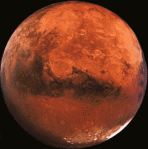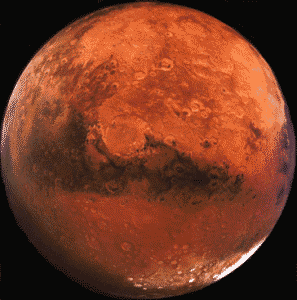
More evidence for the case for the presence of water on the Red Planet
Astronomy News – Planetary scientists taking a second look at a Mars outcropping first examined by NASA’s Spirit Mars Rover back in 2005 think there could be additional evidence for water on large areas of Mars. In specific, planetary scientists have found high concentrations of carbonate, a mineral that scientists have previously shown to originate in wet conditions that dissolves in acid. This leads planet scientists to the conclusion that ancient oceans on Mars couldn’t be acidic and could have been favorable environments for the evolution of life forms.
Water has been hard to find on Mars
This is hardly news as planet scientists have noted the presence of carbonates on the surface of Mars previously, and there could be all sorts of natural ways to produce the carbonates that we humans haven’t experienced, yet. Reports indicate that scientists are finding rock outcroppings with as much as 25 percent carbonate by weight. This is a far higher percentage of carbonate than previously recorded, though, and this data could indicate the presence of vast oceans on the surface of the Red Planet in the past, according to some scientists.
One group of planet scientists in Boulder, Colorado has been studying the possibility that oceans of water once existed on the Red Planet. Gaetano Di Achille and Brian Hynek have been taking a close look at 52 martian deltas and about 40,000 river valleys on Mars, using the combined data from a series of orbiting Mars missions, conducted over years. Their studies lead them to speculate that broad and deep expanses of water once covered up to one-third of the surface of Mars, 3.5 billion years ago.
This team of astronomers concluded that at least half the deltas and river valleys they studied likely marked the boundaries of an ancient sea. The geological features in question are all at the same relative elevation, which implies they were possibly connected to martian seas or large bodies of water, according to this team of scientists.
The volume of water scientist are talking about once existing on the Red Planet is around 30 million cubic kilometers of water, about 10 times less than the volume of water contained in Earth’s oceans. This study appeared online on June 13 in Nature Geoscience.
Astronomers are still looking for the water
John Carter and a team of scientists at the University of Paris, on the other hand, claim that the Red Planet certainly once had vast quantities of water, only not in the form of vast seas and oceans. This team found hydrated silicate minerals within craters in the northern lowlands of the Red Planet, a place where these minerals hadn’t previously been found. This fact, combined with previous indications of hydrated silicate minerals in Mars Southern Hemisphere, leads this team of scientists to conclude that Mars was changed on a global scale by liquid water around 4 billion years in the past. This group of astronomers used NASA’s Mars Reconnaissance Orbiter to look inside 91 impact craters where asteroids have exposed ancient marine material several kilometers beneath the surface of Mars. They found nine contained phyllosilicates or other hydrated silicates, minerals that scientists know form in wet environments.
The real question now is, where did all this water go? Future missions to the Red Planet will be looking for facts to help determine where all the water went or if it might still exist on Mars, in another form. They’ll also be taking a close look at river deltas, which could be excellent regions to search for evidence of past Martian life.
Read about NASA’s Messenger spacecraft and its mission to Mercury
Have you heard about the recent meteorite that exploded near the Ural Mountains

